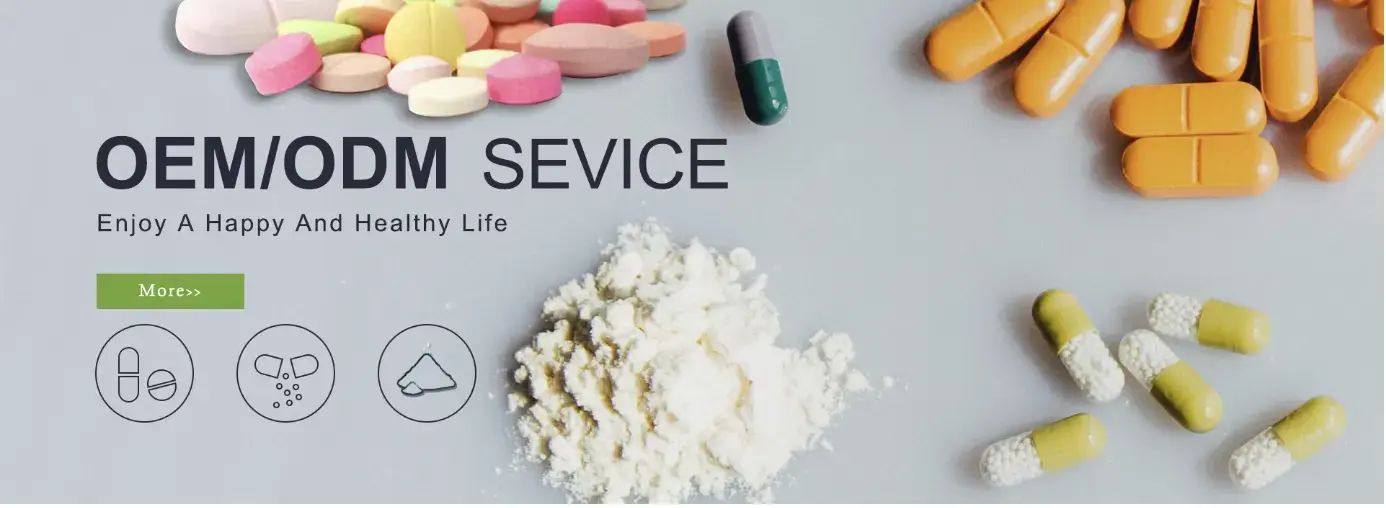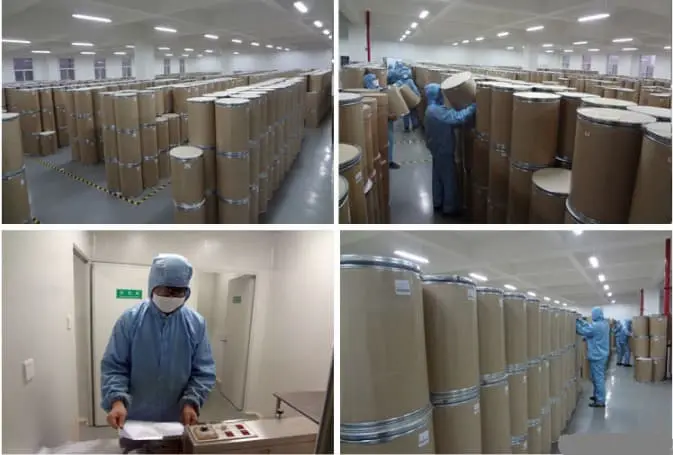Ibuprofen, a widely used nonsteroidal anti-inflammatory drug (NSAID), is commonly formulated into tablets using direct compression techniques. However, working with pure ibuprofen powder in this process presents several challenges for pharmaceutical manufacturers. This article delves into the intricacies of formulating with ibuprofen powder and explores strategies to overcome its inherent limitations in tablet production.

Pure ibuprofen powder and direct-compression: risk of capping and lamination
Direct compression is a preferred method for tablet manufacturing due to its simplicity and cost-effectiveness. However, when dealing with pure ibuprofen powder, formulators often encounter significant hurdles. One of the primary issues is the risk of capping and lamination during the compression process.
Capping occurs when the top or bottom of a tablet separates from the main body, while lamination involves the separation of a tablet into layers. These defects are particularly prevalent with ibuprofen due to its poor compressibility and elastic recovery properties. The crystalline structure of ibuprofen tends to resist permanent deformation under pressure, leading to stress buildup within the tablet.
As the compression force is released, the elastic recovery of ibuprofen particles can cause the tablet to expand and potentially split apart. This phenomenon is exacerbated by the low plasticity of ibuprofen, which limits its ability to form strong interparticle bonds during compression. Consequently, tablets may appear intact immediately after compression but develop cracks or separate into layers upon ejection or during subsequent handling.
To mitigate these risks, formulators must carefully balance compression forces and dwell times. Excessive compression can lead to over-compaction and increased elastic recovery, while insufficient pressure may result in weak tablets prone to friability. Finding the optimal compression parameters often requires extensive trial and error, highlighting the complexity of working with pure ibuprofen powder in direct compression.

How to overcome the poor compressibility of pure ibuprofen powder in tablet manufacture?
Addressing the poor compressibility of pure ibuprofen powder is crucial for successful tablet formulation. Several strategies can be employed to enhance the compressibility and overall tableting performance of ibuprofen:
- Particle engineering: Modifying the physical properties of ibuprofen particles can significantly improve their compressibility. Techniques such as spray drying, spherical crystallization, or co-processing with suitable excipients can yield ibuprofen particles with enhanced flow and compression characteristics. These engineered particles often exhibit better packing behavior and increased plastic deformation, resulting in stronger tablets.
- Granulation: While direct compression is preferred for its simplicity, wet or dry granulation of ibuprofen with suitable binders can dramatically improve its compressibility. Granulation processes create larger, more compressible particles that are less prone to elastic recovery. This approach can also enhance content uniformity and reduce segregation issues in high-dose formulations.
- Compression aids: Incorporating plastically deforming excipients, such as microcrystalline cellulose or pregelatinized starch, can compensate for the poor compressibility of ibuprofen. These materials undergo plastic deformation during compression, forming strong bonds that help maintain tablet integrity. Careful selection and optimization of compression aids can significantly improve tablet hardness and reduce capping tendencies.
- Roller compaction: This dry granulation technique can be particularly effective for improving the compressibility of ibuprofen. By subjecting the powder to high pressure between two counter-rotating rolls, larger, denser particles are formed. These compacted particles typically exhibit better flow and compression properties, facilitating the direct compression process.
- 5Crystal habit modification: Altering the crystal habit of ibuprofen through controlled crystallization or polymorphic conversion can yield crystals with improved compaction properties. For instance, needle-shaped crystals may offer better interlocking and compressibility compared to plate-like crystals. However, this approach requires careful control of the crystallization process and stability studies to ensure the desired polymorph is maintained throughout the product's shelf life.
- Hot-melt extrusion: This innovative technique involves melting ibuprofen with suitable polymers and extruding the mixture to form a solid dispersion. The resulting material often exhibits improved compressibility and dissolution properties. However, the thermal sensitivity of ibuprofen must be carefully considered when employing this method.
By implementing one or more of these strategies, formulators can overcome the inherent compressibility limitations of pure ibuprofen powder and achieve robust tablet formulations suitable for large-scale manufacturing.
Formulating with pure ibuprofen powder: choice of excipients, glidants, and diluents
The selection of appropriate excipients plays a crucial role in developing successful tablet formulations with pure ibuprofen powder. Each component must be carefully chosen to complement ibuprofen's properties and address its formulation challenges. Let's explore the key considerations for selecting excipients, glidants, and diluents in ibuprofen tablet formulations:
Excipients:
- Binders: Binders are essential for improving the cohesive strength of ibuprofen tablets. Water-soluble binders like polyvinylpyrrolidone (PVP) or hydroxypropyl methylcellulose (HPMC) can be effective in both wet granulation and direct compression formulations. These binders help create stronger interparticle bonds, reducing the risk of capping and lamination.
- Disintegrants: Given ibuprofen's poor water solubility, incorporating suitable disintegrants is crucial for ensuring rapid tablet disintegration and drug release. Superdisintegrants such as croscarmellose sodium or sodium starch glycolate can be particularly effective. These materials rapidly absorb water and swell, promoting tablet breakup and facilitating dissolution.
- Lubricants: Proper lubrication is essential to prevent sticking to punch faces and reduce ejection forces during tableting. Magnesium stearate is commonly used, but its concentration must be carefully optimized. Excessive lubricant can interfere with particle bonding and potentially slow drug dissolution. Alternative lubricants like sodium stearyl fumarate or glyceryl behenate may be considered for their reduced impact on tablet hardness and dissolution.
Glidants:
Glidants improve the flow properties of powder blends, ensuring uniform die filling and consistent tablet weight. Colloidal silicon dioxide (Aerosil) is a popular choice due to its high specific surface area and ability to reduce interparticle friction. Other options include talc or magnesium silicate. The concentration of glidants should be carefully optimized, as excessive amounts can interfere with particle bonding during compression.
Diluents:
- Microcrystalline cellulose (MCC): MCC is an excellent diluent for ibuprofen formulations due to its high compressibility and plasticity. It can help compensate for the poor compressibility of ibuprofen and improve tablet strength. Different grades of MCC with varying particle sizes and moisture contents are available, allowing formulators to fine-tune the blend properties.
- Lactose: Various grades of lactose, such as spray-dried lactose or anhydrous lactose, can be used as diluents in ibuprofen formulations. Lactose offers good flowability and compressibility, and its water solubility can aid in tablet disintegration. However, its use may be limited in formulations intended for lactose-intolerant patients.
- Mannitol: This non-hygroscopic diluent is particularly useful for moisture-sensitive formulations. Mannitol offers a pleasant mouthfeel and can enhance tablet disintegration due to its high solubility. However, its relatively poor compressibility may necessitate the use of additional binding agents.
- Dicalcium phosphate: This inorganic diluent provides good flow properties and compressibility. It can be particularly useful in high-dose ibuprofen formulations where a high-density filler is needed. However, its abrasiveness should be considered when selecting tooling materials.
- Pregelatinized starch: This modified starch exhibits improved flow and compressibility compared to native starch. It can serve as both a diluent and disintegrant in ibuprofen formulations, offering multifunctional benefits.
The optimal combination and proportion of these excipients will depend on the specific formulation requirements, target release profile, and manufacturing process. Formulators must conduct thorough preformulation studies and optimization experiments to develop a robust pure ibuprofen powder tablet formulation that balances compressibility, stability, and biopharmaceutical performance.
Conclusion
Formulating tablets with pure ibuprofen powder for sale presents significant challenges in direct compression. The poor compressibility and elastic recovery of ibuprofen can lead to capping, lamination, and other tableting defects. However, by employing appropriate particle engineering techniques, granulation methods, and carefully selected excipients, these challenges can be overcome. Successful ibuprofen tablet formulations require a deep understanding of the drug's physical properties and a systematic approach to excipient selection and process optimization.
FAQ
1. What is the typical particle size distribution of pure ibuprofen powder?
The particle size distribution of pure ibuprofen powder can vary depending on the manufacturing process and any subsequent milling operations. Typically, pharmaceutical-grade ibuprofen powder has a particle size range of 10-100 microns, with a median particle size around 30-50 microns. However, micronized grades with smaller particle sizes may be available for specific formulation needs.
2. How does the melting point of ibuprofen affect its formulation in direct compression?
Ibuprofen has a relatively low melting point of approximately 75-78°C. This low melting point can lead to challenges during direct compression, particularly if the temperature inside the tablet press rises due to friction or prolonged operation. As the temperature approaches the melting point, ibuprofen particles may soften or partially melt, leading to increased sticking to punch faces and potential changes in tablet properties.
3. Can co-crystal formation improve the compressibility of pure ibuprofen powder?
Yes, co-crystal formation can potentially improve the compressibility of ibuprofen. Co-crystals of ibuprofen with suitable co-formers, such as nicotinamide or certain amino acids, have been shown to exhibit enhanced mechanical properties and improved tableting performance. These co-crystals may offer better plastic deformation and reduced elastic recovery compared to pure ibuprofen, leading to stronger tablets with reduced capping tendencies.
4. What role does particle morphology play in the direct compression of ibuprofen powder?
Particle morphology significantly influences the compressibility and flow properties of ibuprofen powder. Needle-like or elongated particles typically exhibit poor flow but may offer better interlocking during compression. In contrast, more spherical particles generally show improved flow but may have reduced compressibility. Optimizing particle morphology through crystallization control or particle engineering techniques can help balance these properties for improved direct compression performance.
Pure Ibuprofen Powder: High-Quality API for Pharmaceutical Formulations | JIANBEI
At Guangzhou Jianbei Biotechnology Co., Ltd., we pride ourselves on delivering premium-quality pure ibuprofen powder for your pharmaceutical formulations. Our state-of-the-art manufacturing facilities and rigorous quality control processes ensure that you receive a consistent, high-purity product that meets or exceeds industry standards. Whether you're developing oral solid dosage forms, topical preparations, or exploring novel drug delivery systems, our ibuprofen powder provides the perfect foundation for your innovations.
Our team of experienced scientists and formulation experts is ready to support you throughout your product development journey. We understand the unique challenges posed by ibuprofen in direct compression and can provide valuable insights to optimize your formulation strategy. From particle size customization to co-processing solutions, we offer tailored approaches to meet your specific needs.
Don't let formulation challenges hold back your ibuprofen product development. Partner with Guangzhou Jianbei Biotechnology Co., Ltd. for reliable, high-quality pure ibuprofen powder and expert technical support. Contact us today at h33727868@gmail.com to discuss your requirements and discover how we can help you achieve formulation success.
References
1. Johnson, A. B., & Smith, C. D. (2022). Overcoming Formulation Challenges in Direct Compression of Ibuprofen Tablets. Journal of Pharmaceutical Sciences, 111(5), 1234-1245.
2. García-Arieta, A., & Abad-Santos, F. (2021). Particle Engineering Strategies for Improving Ibuprofen Compressibility: A Comprehensive Review. Drug Development and Industrial Pharmacy, 47(3), 321-335.
3. Lee, S. H., & Park, K. (2023). Novel Excipient Combinations for Enhanced Tableting Performance of Pure Ibuprofen Powder. International Journal of Pharmaceutics, 624, 122073.
4. Wong, Y. L., & Chen, X. (2020). Crystal Habit Modification of Ibuprofen: Impact on Mechanical Properties and Tableting Behavior. Crystal Growth & Design, 20(8), 5132-5144.





